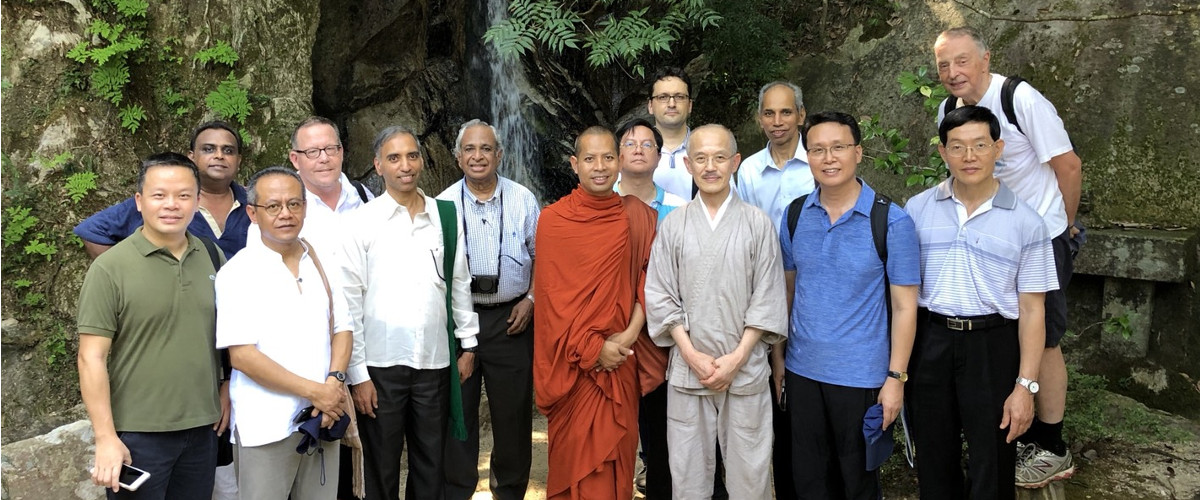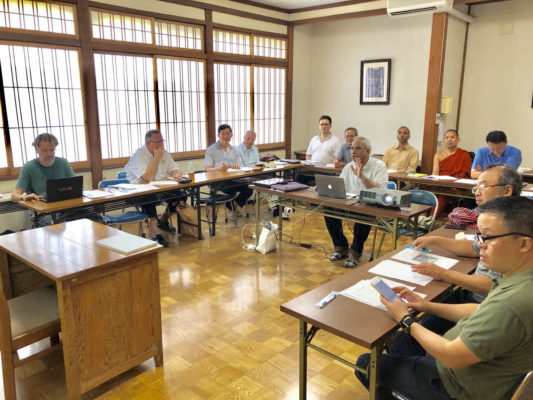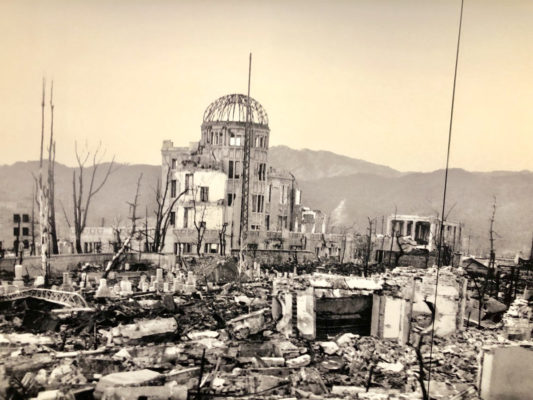 For the Buddhist Studies and Dialogue Group of the Jesuit Conference of Asia Pacific, there was no better place to talk about peace and reconciliation, the theme of this year’s workshop, other than Hiroshima. The city devastated by the first atomic bomb now stands as a beacon of peace and reconciliation.
For the Buddhist Studies and Dialogue Group of the Jesuit Conference of Asia Pacific, there was no better place to talk about peace and reconciliation, the theme of this year’s workshop, other than Hiroshima. The city devastated by the first atomic bomb now stands as a beacon of peace and reconciliation.
 “When people say Hiroshima, the feeling is one of positive reconstruction, and it’s that story that I take away,” said Fr Greg Sharkey SJ, Assistant for Buddhist Interreligious Relations in Rome.
“When people say Hiroshima, the feeling is one of positive reconstruction, and it’s that story that I take away,” said Fr Greg Sharkey SJ, Assistant for Buddhist Interreligious Relations in Rome.
The workshop held at the Nagatsuka Spirituality Centre from August 2 to 6 was timed to allow attendance at the interreligious prayer meeting for peace on August 6. The 19 participants comprised 15 Jesuits, a Maryknoll priest from Japan, a diocesan priest from Switzerland, a Korean Protestant pastor and a Cambodian Buddhist monk.
The first session of the workshop was held in a very significant place for the Jesuits in the group – the chapel where Fr Pedro Arrupe SJ had cared for the victims of the atomic bomb in 1945.
“We could imagine the very chapel filled with the anguish of the ailing victims,” said Fr Mathew Cyril SJ.
The chapel was also where the World Peace Prayer Service was held on the second day. The participants joined The World Peace Prayer Society in praying for peace in each country. Country flags were beautifully arranged in the chapel, and all gathered took turns standing in front, holding their national flag aloft, while the whole group prayed, “May peace prevail in this country”.
 During the workshop proper, the topics covered included the history of Japanese Buddhism by Fr Cyril Veliath SJ. Fr Alexander Varickamackal SJ, Director of the Center for Spirituality of Western Japan, spoke of Fr Hugo Makibi Enomiya Lassalle SJ; of his experience during the bombing, his dedication to Zen practice and his conviction to build the Memorial Cathedral for World Peace. Fr Rolph Zumthurm screened extracts of the film, “Bridge Builder between Zen and Christianity” on Fr Lassalle and shared about his own work in Europe along the same lines.
During the workshop proper, the topics covered included the history of Japanese Buddhism by Fr Cyril Veliath SJ. Fr Alexander Varickamackal SJ, Director of the Center for Spirituality of Western Japan, spoke of Fr Hugo Makibi Enomiya Lassalle SJ; of his experience during the bombing, his dedication to Zen practice and his conviction to build the Memorial Cathedral for World Peace. Fr Rolph Zumthurm screened extracts of the film, “Bridge Builder between Zen and Christianity” on Fr Lassalle and shared about his own work in Europe along the same lines.
Fr Jarosław Marek Duraj SJ of the Macau Ricci Institute spoke of the metaxological philosophy of dialogue with Buddhism. The term “metaxy”, he explained, was first used by Plato and means standing in-between or in the middle while engaging in dialogue with another culture and religion, without bias, pride, pre-conditions or presumptions, but with humility, openness and freedom.
Fr Bernard Senecal SJ shared about a life-changing Ignatian discernment retreat that led him to enter the Society, and of how his experience of Vipassana meditation and subsequent special studies and training in Korean Buddhism led him to a broader view of spirituality that is always open to new realities and spiritual experiences.
To jumpstart discussions on what more the group can do to encourage Buddhist-Christian dialogue, Fr Anh Tranh SJ gave a historical outline of Jesuit engagement in dialogue with Buddhists. Fr In-gun Kang SJ, JCAP Coordinator for Buddhist Studies and Dialogue, then presented plans for the East Asia Theological Encounter Program (EATEP), which introduces young Jesuits to contextual theology and Buddhism; book projects that are in the pipeline, including an anthology of articles on Ignatian spirituality and Buddhism edited by Fr Ari Dy, and Fr Michael Amaladoss’ lectures on contextual theology in his EATEP course; and possibly a joint meeting with the JCAP Dialogue with Islam group.
Interspersed during the meeting were visits to significant sites such as the Mitaki Temple, Hiroshima Peace Memorial Park and Museum, and Fr Lassalle’s Memorial Cathedral for World Peace.

The visit to the peace museum where they could feel the intensity and horror of the high human suffering on that black day, see the monuments dedicated to peace, and participate in the prayer services was a profound experience for all, Christian and Buddhist alike.
“I was born a few kilometres from Auschwitz; coming here is reconnecting with that reality. Hiroshima is also a huge cemetery. It resonates in me and will resonate for years to come,” said Fr Duraj.
Ven Sovechea said, “Cambodia had the same experience of holocaust. I longed to participate in this workshop in Hiroshima in order to offer merits for all the victims of the war.”
The participants also made a pilgrimage to the Miyajima Shinto Shrine, which by its structure and setting highlights how much the Japanese soul is deeply connected with the Shinto spirit.
The meeting concluded with ecumenical prayers for peace in the Peace Park followed by a procession to the Peace Cathedral. Since the cathedral is being renovated, the Mass was celebrated at the music hall of Elizabeth University, next to the cathedral, by 13 bishops and concelebrants, and joined by hundreds of faithful.
Now back in Cambodia where he is missioned, Fr Kang shared a consolation he felt in his heart from being in “the place of Fr Arrupe”: “Human beings have the potential to destroy everything at once, but also to develop the most beautiful things in the world. We are invited to become a seed of hope for peace as was Fr Arrupe.”

